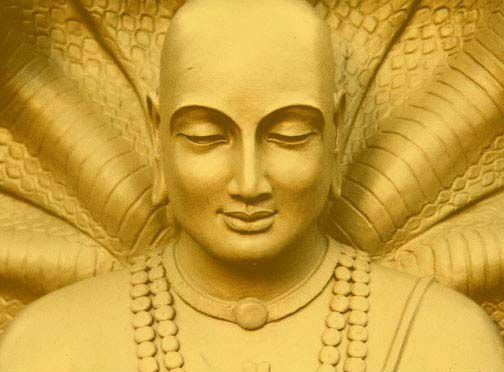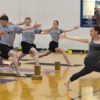
Modern Yoga VS Authentic Indian Yoga
Finding Life’s Meaning Through The World Of Yoga
The word “Yoga” in Sanskrit (the language of ancient India – where yoga originated) is defined as “UNION.” Yoga is the true union of mind, body and spirit. . The critical aspect of yoga is to bring ones attention inwards (the spiritual aspect of yoga) – which is critical to one’s well-being and the foundation for a healthy and wholesome life.
In the modern world and in today’s language, the word yoga is commonly used to describe the physical postures or poses (Sanskrit word “asana”), but posture or asana is only one of the eight limbs of yoga as stated in the Yoga Sutras of Patanjali.
1. Yama: The 1st limb constitutes the 5 ethical guidelines for moral behavior towards others.
Ahimsa: Nonviolence
Satya: Truthfulness
Asteya: Non stealing
Brahmacharya: Non-lust
Aparigraha: Non-covetousness
2. Niyama: The 2nd limb constitutes the 5 guidelines for moral behavior towards oneself:
Saucha: Cleanliness
Santosa: Contentment
Tapas: Sustained practice
Svadhaya: Self Study
Isvara pranidhana: Surrender to God
3. Asana: The 3rd limb is the practice of yoga postures or asanas.
4. Pranayama: The 4th limb is the practice of controlled breathing exercises.
5. Pratyahara: The 5th limb is the practice of withdrawal of the senses, the practice of going inwards.
6. Dharana: The 6th limb is the practice of concentration, the ability to focus without distractions from the outside world.
7. Dhyana: The 7th limb is the practice of meditation. Meditation is a holistic discipline through which the practitioner attempts to get beyond the reflexive, “thinking” mind into a deeper state awareness.
8. Samadhi: The 8th limb of yoga is the state of bliss, the enlightened state, where the Self transcends through meditation.
Those who have gone deeper into the world of yoga through all its limbs have found solace. They have understood what it means to have a yogic life and are gradually making yoga in all its glory a part of their life.
There are very few places that yoga is taught authentically and from every aspect – where the philosophies and the principles are brought right into the practice itself, where the instructor spends time in discussing and incorporating the critical aspects of life. These seem to be reserved for Yoga Teacher Training only and even then all aspects may not be covered. The modern world sees yoga as an asana practice only, which again is just one limb out of the 8 limbs of yoga. Yoga means to be wholesome. A yogin is someone who strives to cultivate all aspects of being a wholesome human.
Here is an excerpt from the wikipedia about asanas, that throws light on the real meaning of a yoga practice, which in the modern world has become nothing more than an exercise routine:
“Asana (/ˈɑːsənə/; About this sound listen (help•info) Sanskrit: आसन āsana [ˈɑːsənə] ‘sitting down’, < आस ās ‘to sit down’) is a body position, typically associated with the practice of Yoga, originally identified as a mastery of sitting still. In the context of Yoga practice, asana refers to two things: the place where a practitioner (or yogin, in general usage), yogi (male), or yogini (female) sits and the manner (posture) in which he/she sits In the Yoga sutras, Patanjali suggests that asana is “to be seated in a position that is firm, but relaxed” for extended, or timeless periods.
As a repertoire of postures were promoted to exercise the body-mind over the centuries to the present day, when yoga is sought as a primarily physical exercise form, modern usage has come to include variations from lying on the back and standing on the head, to a variety of other positions.However, in the Yoga sutras, Patanjali mentions the execution of sitting with a steadfast mind for extended periods as the third of the eight limbs of Classical or Raja yoga,[6] but does not reference standing postures or kriyās. Yoga practitioners (even those who are adepts at various complex postures) who seek the “simple” practice of chair-less sitting generally find it impossible or surprisingly grueling to sit still for the traditional minimum of one hour (as still practiced in eastern Vipassana), some of them then dedicating their practice to sitting asana and the sensations and mind-states that arise and evaporate in extended sits.
Asana later became a term for various postures useful for restoring and maintaining a practitioner’s well-being and improving the body’s flexibility and vitality, with the goal of cultivating the ability to remain in seated meditation for extended periods. Asanas are widely known as “Yoga postures” or “Yoga positions”. “Asana” quite simply means “a posture”. Any way that we may sit, stand or position our hands is an asana. Therefore, many asanas are possible. However, a particular posture that leads you to a higher possibility is called a yogasana.
Yoga in the West is commonly practiced as physical exercise or alternative medicine, rather than as the spiritual self-mastery meditation skill it is more associated with in the East.”
The modern world is about instant gratification, whining, complaining, showing anger, back-biting, writing nasty comments originating from their own angry minds without a sound perspective, threatening, jumping to baseless conclusions, making false assumptions and without any sense of remorse, eating whatever comes their way, indulging in mindless activities, wasting time and money on things that do not matter,instead of reaching the depths of their own being where peace, joy and wisdom resides, and yet such people want to call themselves “yogi” and “yoginis”.
The real yoga is who you are inside and not what you have accumulated in the external world. It is a journey to an enlightened state of being.
A healthy, strong, flexible and balanced mind leads to a healthy, strong, flexible and balanced body. Without developing awareness, without the practice of meditation and breathing, which leads to such a healthy state, there is no yoga.
It all begins with planting of the right seed of awareness. We are in yoga 24X7, for it is how we conduct our life. ~ Umang Goel
We would love to read your comments below. And remember to share your joy with others.






